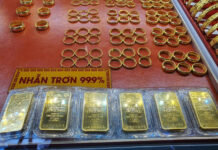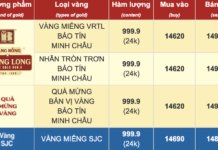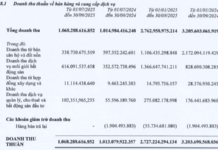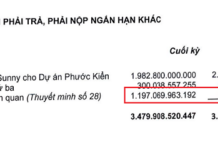“The Unique Delicacy” of the Tra Khuc River
Originating from the Dak To Ron Plateau in Kon Tum, the river flows through the province of Quang Ngai, merging with four smaller rivers: the Tang, Xa Lo, Re, and Rin. It winds its way through the districts of Son Ha, Son Tinh, Tu Nghia, and the city of Quang Ngai before emptying into the East Sea at Cua Dai, forming the Tra Khuc River.

Cào don fishing on the Tra Khuc River. Photo by Bui Thanh Trung
Unlike other rivers that rush downstream, the Tra Khuc meanders slowly, bending around mountains and villages. Before reaching the East Sea, this generous river leaves behind fertile fields on its banks, enriched by the annual deposit of a large amount of alluvium. In addition, the river offers a unique gift to the locals: a species of small shrimp, about the size of a chopstick, with a distinct flavor. But perhaps the most special delicacy is the don, a “unique” seafood found only in the Tra Khuc River and nowhere else in Central Vietnam.

Mr. Duong Nam Boi, who has decades of experience in don fishing. Photo: NN
As the final floods of the region subside, several aquatic species in the Tra Khuc River return home after taking refuge in the reeds and roots to escape the raging waters that threatened to sweep them out to sea. The river suddenly becomes calm, as if unaware of the devastation it had caused during the fierce floods.

The specialty dish of Quang Ngai: Don. Photo: NN
Along with the golden sand that the river leaves on its banks, the “perfume” of the upstream flora also settles at the end of the river. This provides an endless food source for the don, which bury themselves in the sand to feast on the river’s offerings. The unique flavor of the don is attributed to this special diet of “perfume” from the flora of the Truong Son Mountains.
It is difficult to explain why all the rivers in Central Vietnam share similar characteristics and environments, yet the Tra Khuc River is the only one that is home to the don. The poet Thanh Thao, in his poem about the Tra Khuc River, wrote: “I am the don, from the Tra Khuc River”… Indeed, only the Tra Khuc River nurtures this unique mollusk, found nowhere else.
Diving for Don

Freshly caught don
In the early days of July, under the scorching sun of Central Vietnam, one can witness the hardworking men and women of the Tra Khuc River tirelessly fishing for don. With weathered faces and dark, tanned skin, they wear wide-brimmed conical hats to shield themselves from the sun. Each person’s equipment includes a rake, two baskets, an aluminum boat, and a small bag. They wake up before 5 am to prepare food and set out on the river before dawn, returning home only at dusk.
Mr. Duong Nam Boi, a 60-year-old resident of Nghia Ha commune in Quang Ngai city, has spent almost half a century “living on the river and sleeping on the water” with the don. He shares that in this riverine community, children grow up thanks to the don. “When I was young, I followed my father to fish for don. From generation to generation, it has become the ‘exclusive’ profession of the people of Quang Ngai. The Tra Khuc River is like a mother’s milk, sustaining countless generations who make a living from the river…” Mr. Boi reminisces.

Tools for fishing don. Photo: NN
Don fishing is a strenuous job that requires good health and endurance. While some people learn the trade in a few days, others may take up to two months. Many give up after their first attempt, lacking the patience and stamina required. “It takes about 5 days to a week for a quick learner to master don fishing, but it can take up to 2 months for others. Some people quit because it demands diligence and perseverance. It may look simple, but catching don is challenging. I used to follow my father out of curiosity, and eventually, I became hooked on this underwater profession. It took me a whole year to learn the trade,” Mr. Boi says with a smile.
According to the elders, don live in brackish water, burying themselves in the sand and feeding on the “perfume” of upstream flora that flows downstream. Along with the bống fish, don are considered the cleanest aquatic species in the Tra Khuc River. I asked, “Why do we ‘rake’ for don but ‘scoop’ for clams, even though they are similar species?” Mr. Boi explained, “Clams live in freshwater and stay on the surface, so scooping is effective. However, don live in brackish water and bury themselves deep in the sand, so raking is necessary to catch them. The meat of the don is firmer, sweeter, and more flavorful than clams.”
As the clock approached 10 am, the temperature rose, and Mr. Nguyen Ngoc Thuy (from Nghia Ha commune) rinsed off the last batch of don and began packing up his don fishing equipment onto his aluminum boat. Pointing to the bucket of don, he said, “Today’s catch is almost 30 cans, less than usual. The income from this profession is unpredictable; some days, I earn between 100,000 and 200,000 VND, while on better days, I can make up to 400,000 VND.”
In the local riverine community, a “can” is the unit of measurement for don. Approximately 4 cans are equivalent to 1 kilogram of don. It has become a habit for the locals to refer to their catch in “cans” rather than kilograms when talking about their daily haul. “The sun is so intense that you can feel the water in the river heating up. The sun is merciless, and the water is getting warmer as the tide goes out. It’s time to retreat from the heat,” Mr. Thuy explained his decision to head back to shore.
Compared to other riverine occupations, don fishing offers higher income but comes with certain risks. Some people have stepped on broken glass while fishing, experienced leg cramps, or been caught in whirlpools. Constant immersion in the water has left the “don hunters'” hands and feet a bluish color, marked with large and small scars—memories of encounters with broken glass. Despite these challenges, the people of the Tra Khuc River remain committed to the ancestral profession. Their biggest concern now is the declining population of don. “Don has become a specialty of Quang Ngai. We hope for a clean riverine environment so that the don can thrive and continue to be a source of pride for Quang Ngai cuisine,” said Mr. Hoa.
From these tiny don, the people of Quang Ngai have created a famous dish that has captivated both locals and visitors alike. Don has become a unique specialty, not a luxurious delicacy, but a humble dish that exudes the essence of the region. Preparing don is not complicated; the most challenging part is cleaning the don to remove the sand and river sediment and then extracting the intestines. After that, simply add seasoning and garlic and serve with rice crackers to enjoy a sweet and savory bowl of don. Don reflects the characteristics of the people of Quang Ngai: unpretentious, affordable, and naturally delicious. The distinct sweetness of the don, combined with the region’s unique ingredients, has created a specialty dish that is a source of pride for Quang Ngai’s culinary culture.
Quảng Ngãi province seeks documents from Phuc Son Corporation for Economic Police Department
In order to investigate potential legal violations that have occurred at Phuc Son Corporation, the Provincial People’s Committee of Quang Ngai has requested the cooperation of relevant departments and agencies to provide information.






































